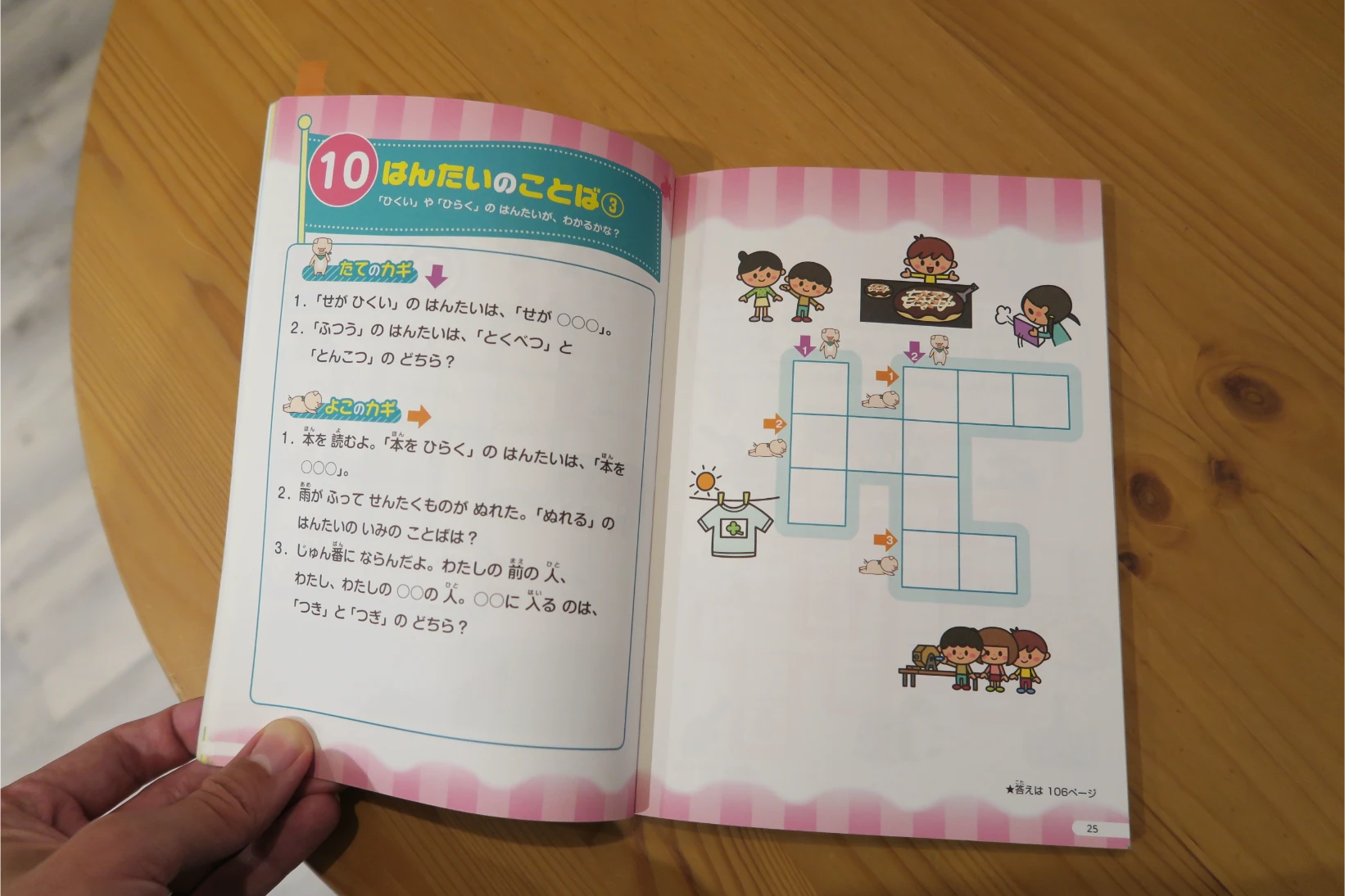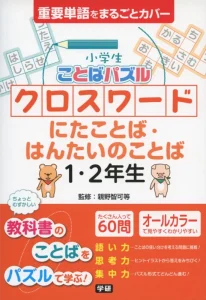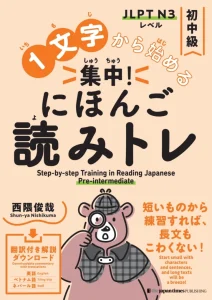If you’re a student who feels like you’ve had quite enough of traditional textbooks, sometimes it can be a great idea to explore puzzle books made for children in Japan.
This book includes a variety of word games focusing on synonyms and antonyms to help boost your vocabulary. Mixing different kinds of language study every now and then helps activate different parts of your brain, making new words easier to recall and remember over time.
Like any crossword, it gives you horizontal and vertical clues, each with a short sentence to help you think of what might fit in the space. In other cases, the puzzles use images as prompts, adding a fun visual twist to the task.
Since this book is written for Japanese children, it’s entirely in Japanese with no English at all. Because of that, you’ll want to reach around JLPT N5 level before attempting to understand native puzzle books like this one.
Towards the back, there are a few short columns that help readers better grasp what the puzzles were testing. Some of these sections even explain the difference between spoken and written Japanese. While learning from a resource written entirely in Japanese can be challenging, it can also be a fun and rewarding experience if you have enough vocabulary to keep up.
As a children’s book, though, there are some small drawbacks compared to a Japanese textbook for foreign learners. Words that would normally appear as a mix of hiragana and kanji are often written just in hiragana, which can slow down reading for those used to kanji. The good news is that whenever kanji is used, it comes with helpful furigana, so you don’t need to be a kanji expert to follow along.
Another charming quirk of this book is that the tone and phrasing are quite casual, in line with everyday Japanese used by native kids. If you’re coming from more formal learners’ books like Genki or Minna no Nihongo, it might be surprising not to see the polite sentence endings you’re used to. Still, the crosswords are the real highlight here, and seeing how Japanese is taught to Japanese kids offers an interesting new lens on language learning.






